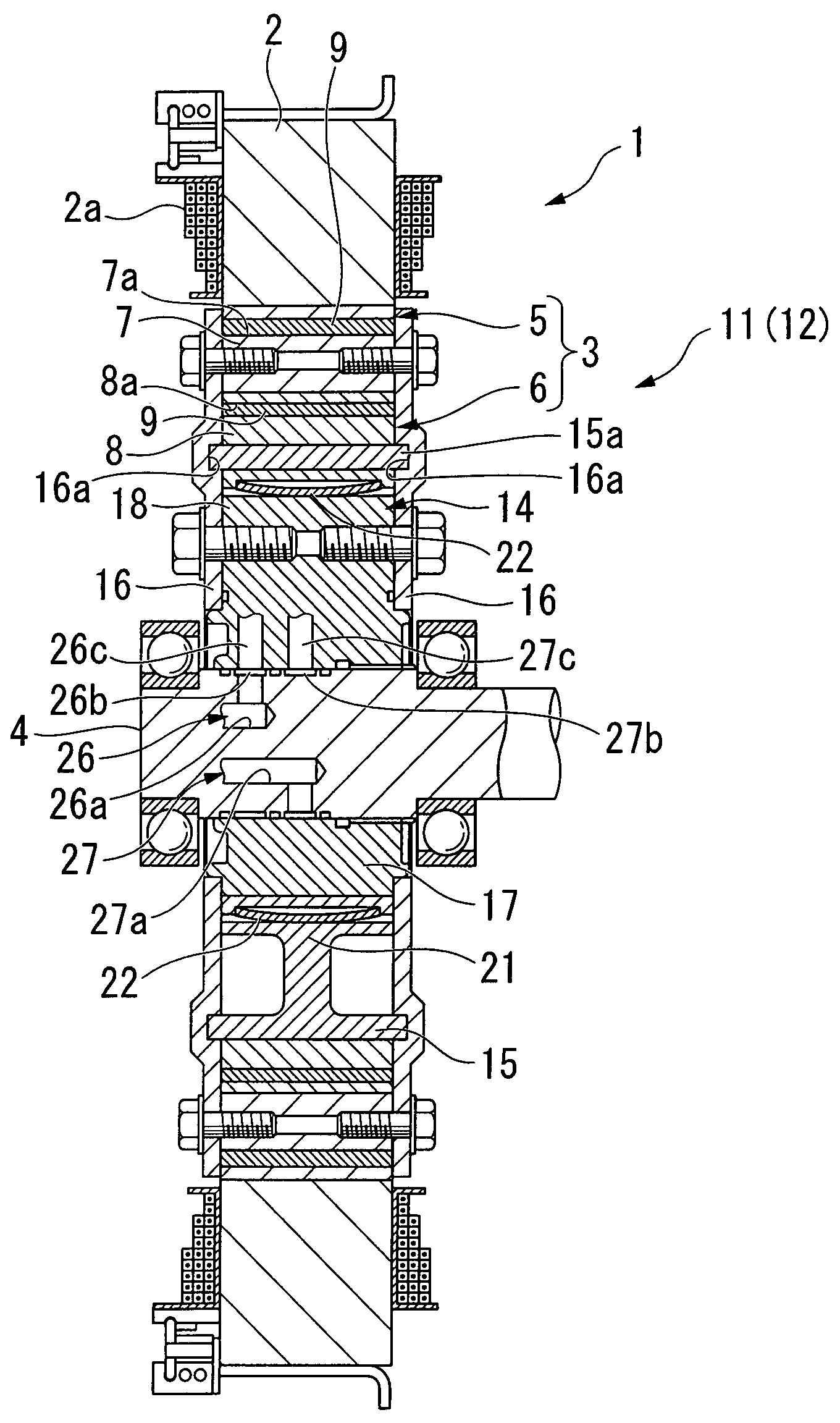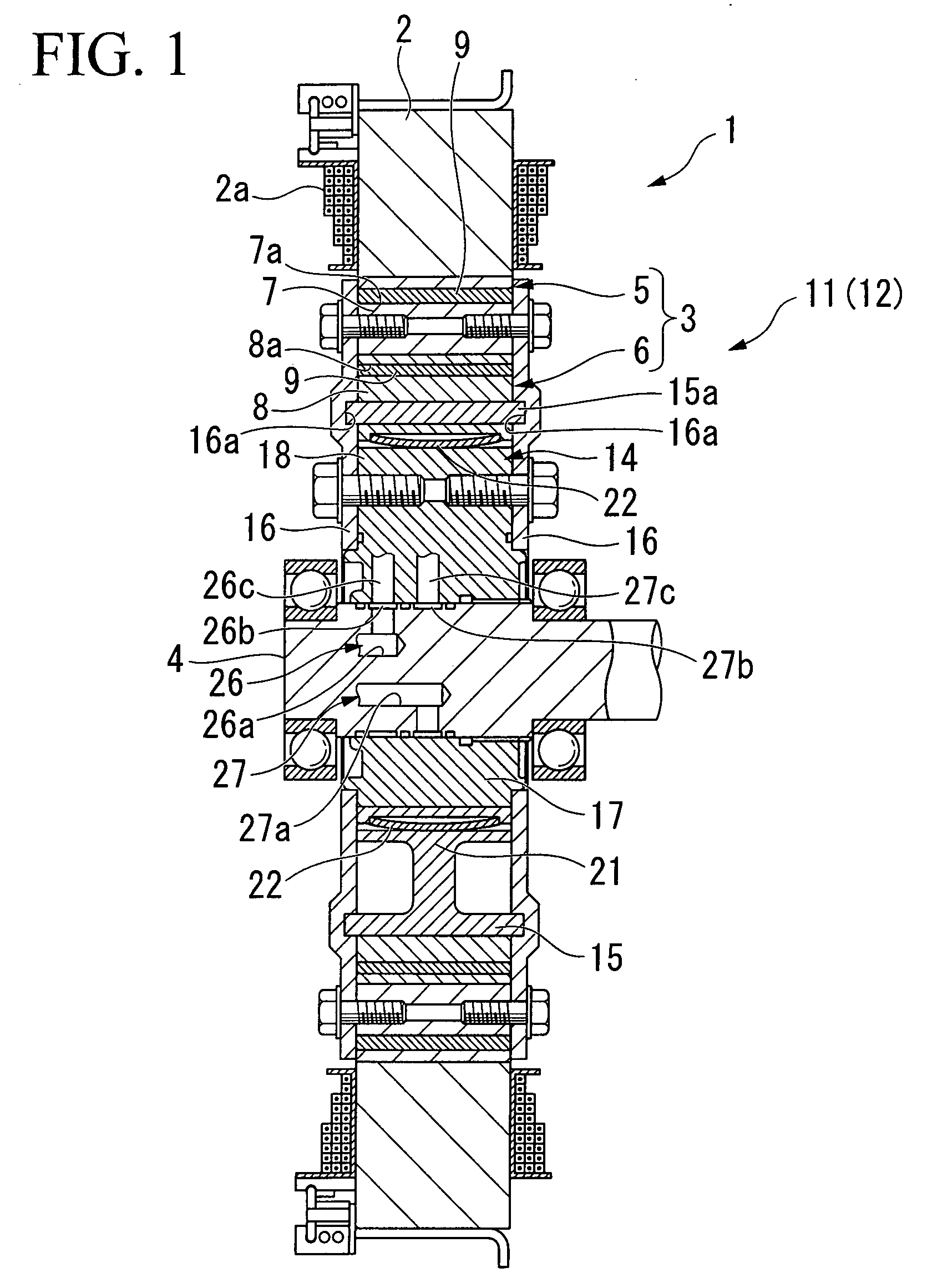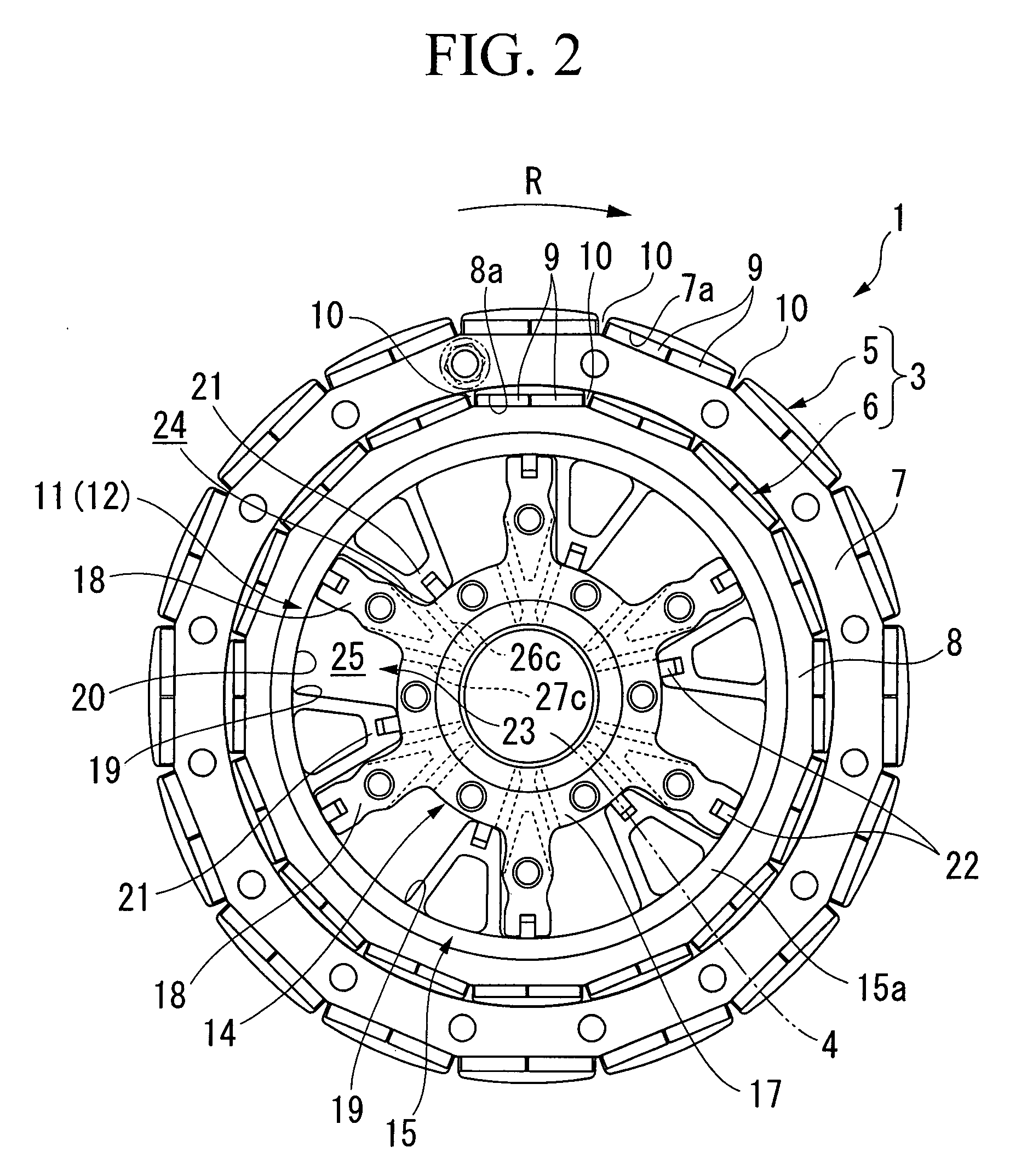Motor using working fluid distributed into chambers, which are provided for rotating rotors in opposite relative rotation directions
a working fluid and chamber technology, applied in the direction of liquid fuel engines, machines/engines, combination engines, etc., can solve the problems of increasing the relevant occupied space in the motor and the manufacturing cost, and achieve the effect of reducing energy loss, increasing the pressure of the line passage, and reliably rotating the inner-peripheral rotor forward
- Summary
- Abstract
- Description
- Claims
- Application Information
AI Technical Summary
Benefits of technology
Problems solved by technology
Method used
Image
Examples
first embodiment
[0070]A first embodiment will be explained with reference to FIGS. 1 to 12.
[0071]FIG. 1 is a sectional view of main parts of a motor 1 of the first embodiment. FIG. 2 is a side view (in which some parts are omitted) showing a rotor unit of the motor, which is controlled to stay at the most backward-angle position. FIG. 3 is an exploded perspective view showing the rotor unit of the motor. FIG. 4 is a side view showing the rotor unit, which is controlled to stay at the most forward-angle position.
[0072]As shown in FIGS. 1 to 4, the motor 1 is a blushless DC motor of an inner rotor type, in which a rotor unit 3 is arranged on the inner-peripheral side of a circular stator 2. The motor 1 may be used as a driving source for running a hybrid vehicle, a motor-driven vehicle, or the like. The stator 2 has stator windings 2a having different phases. The rotor unit 3 has a rotating shaft 4 on the axial center thereof.
[0073]When using the motor 1 as the driving source for running a vehicle, t...
third embodiment
[0133]FIG. 14 is a sectional view of main parts of a motor as the present invention. FIG. 15 is a side view showing a rotor unit of a motor as a fourth embodiment of the present invention.
[0134]The motors 1 of the third and fourth embodiments respectively have rotation mechanisms 111 and 211 (each belonging to the phase varying device 12), which are each different from the rotation mechanism 11 of the first embodiment. The other structural elements of each of the third and fourth embodiments are substantially identical to those of the first embodiment; thus, parts identical to those in the first embodiment are given identical reference numerals, and duplicate explanations are omitted.
[0135]The rotation mechanism 111 of the third embodiment, shown in FIG. 14, has (i) an inner cylindrical member 112 (i.e., a first member) which has a bobbin form, and is fit to the outer face of the rotating shaft 4 via splines in a manner such that the inner cylindrical member can rotate together with...
fourth embodiment
[0143]In the fourth embodiment shown in FIG. 15, a rotation mechanism 211 has (i) an inner block 212 (i.e., a first member), which is fit around the outer face of the rotating shaft 4 via splines, so that it can rotate together with the rotating shaft 4, and (ii) an outer block 213 (i.e., a second member), which has a substantially cylindrical form and arranged on the outer periphery of the inner block 212. The outer block 213 is fit and integrally fastened to the inner-peripheral face of the inner-peripheral rotor 6, and ends of the inner block 212 in the axial direction are integrally coupled with the outer-peripheral rotor 5 via drive plates (also as the first member, not shown), each striding over side ends of the outer block 213 and the inner-peripheral rotor 6. In this rotation mechanism 211, the inner block 212 is integral with the rotating shaft 4 and the outer-peripheral rotor 5, and the outer block 213 is integral with the inner-peripheral rotor 6.
[0144]The inner block 212...
PUM
 Login to View More
Login to View More Abstract
Description
Claims
Application Information
 Login to View More
Login to View More - R&D
- Intellectual Property
- Life Sciences
- Materials
- Tech Scout
- Unparalleled Data Quality
- Higher Quality Content
- 60% Fewer Hallucinations
Browse by: Latest US Patents, China's latest patents, Technical Efficacy Thesaurus, Application Domain, Technology Topic, Popular Technical Reports.
© 2025 PatSnap. All rights reserved.Legal|Privacy policy|Modern Slavery Act Transparency Statement|Sitemap|About US| Contact US: help@patsnap.com



